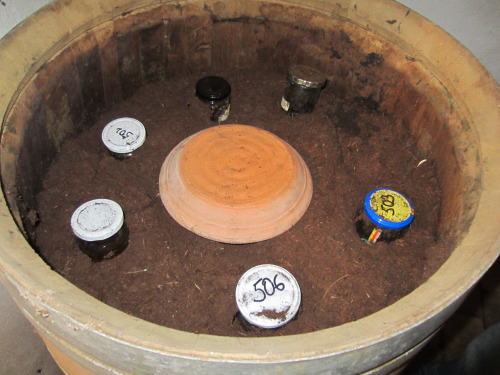I’ve often mused about biodynamics (some examples here, here, and here), how it should be interpreted, and how it should be studied. At WAC, two starkly different takes were presented on how it is being studied : one from the production side, and one from the commercial side. Both of them focused on a particular factor – quality. This is often a primary reason cited for converting to biodynamics (BD for short) amongst winemakers, but the scientific world, and many consumers, can have trouble finding any concrete reason that the esoteric practices of BD should have such a positive influence.
Georg Meissner has been studying BD practices since 2005, in what is probably the largest and most in-depth scientific study being conducted on BD (at least in Europe – let me know if there are others in other parts of the world!). He explains the long-term project as taking a “holistic” approach, which, in theory, sounds exactly like what I have often proposed as necessary to understand BD. If we want to understand this holistic system, we will never succeed with a reductionist approach, as we would inevitably be excluding some of the variables imperative to the functioning of the multidimensional system (if indeed the explanations of BD are correct, and its functioning relies on the synchronization of all parts of the system).
But I’m not sure where we draw the line between “holistic” and simply looking at as many factors and responses as one can possibly think of. To me, holism implies a sense of unification, a “whole is greater than the sum of its parts” element, that we can’t necessarily access simply by looking at all of the variables simultaneously. There is a missing link, that extra little edge that boosts our sum into a bigger whole, that doesn’t come so easily. This project does the best that science can do, I believe, looking at the effect of biodynamic preparations (particularly 501), but seemingly not the more abstract aspects of BD, notably the role of the lunar calendar, on a multitude of factors: the soil, the worms residing in it, the vines, diseases, biodiversity, grapes, juice, and wine, and even the copper chloride crystallization (“sensitive crystallization” – a subject often spoken of in the same breath as Bonny Doon Vineyard’s Randall Graham, who uses this technique in his marketing materials) patterns resulting from it. The first three years of the study were dedicated to getting an overall picture of how each of these factors is affected by different viticultural systems (BD, organic, and conventional), and since 2010 they have attempted to dive deeper. I fear only that in diving deeper they may lose sight of the holistic picture they are striving to create, in focusing, as science tends to do, on the micro-level details that tend to be seen as disconnected from the greater whole. All of this remains to be seen, but in any case I applaud this team of researchers for their dedication and effort in pursuing a subject not always appreciated in scientific circles, and attempting, within the bounds of the scientific system, to take an approach that remains true(r) to the integrated spirit of biodynamic agriculture.
 BD Preps at Weingut Hirsch in Autstria
BD Preps at Weingut Hirsch in Autstria
Giacomo Negro, a Business professor and sociologist at Emory University, presented quite a different approach to studying BD. His work focuses on the consumer perception of BD, and he proposes that BD is a “signal” of high quality. The work is based on the concept of “collective signals” which are one of the mechanisms by which a consumer can glean information about the products available for purchase. To study this, Negro’s work compares a winery’s scores in two important wine reviews, Wine Spectator and Gault & Milau’s Le Guide des Vins de France to their chosen method of cultivation. The work looks at a winery’s rating before and after conversion to BD, and finds in general that there is a positive correlation of quality rating, as expressed in the scores, and BD production. He also looks at price, though here I worry that too many confounding factors may be present, as it is generally accepted that BD (and organic) producers incur slightly- to highly-elevated production costs, which can also be linked to higher bottle prices.
Quite clearly a different type of study and thus one that confronts a whole host of different issues, this work also represents a way of thinking about BD. Can we evaluate its quality (or that of any wine, for that matter) properly by a one-dimensional numeric score? What other factors play into quality? Does the story of a wine count as well? I think, in BD especially, consumers are often inclined to purchase more than simply the bottle’s contents. Their reasons for buying may have ecological, moral, even borderline spiritual (especially when it comes to BD) undertones, so perhaps further consumer perception studies on BD wines could take aspects of this complexity into account.
